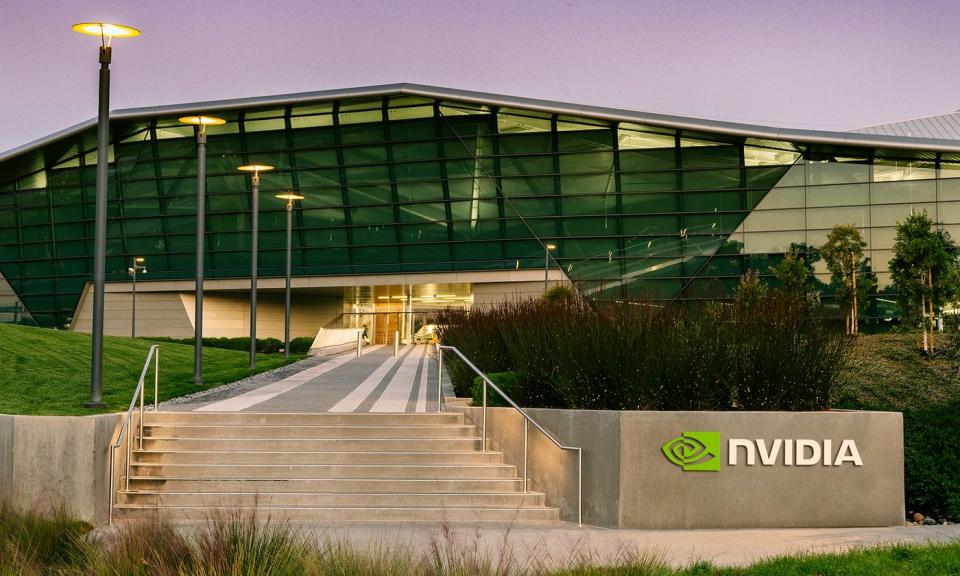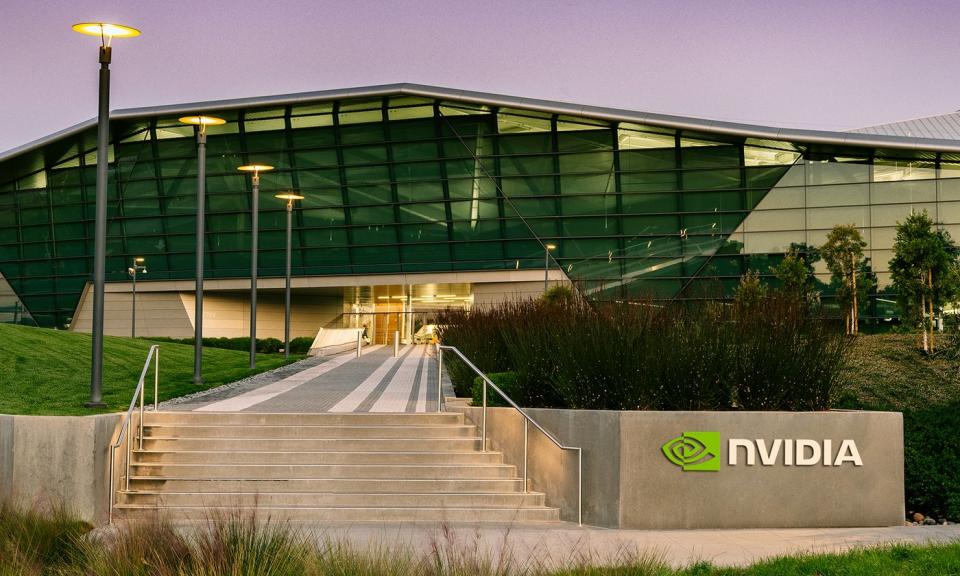Nvidia was a $360 billion company at the start of 2023. A mere 18 months later, it’s now worth $3.1 trillion, making it the world’s third-largest company behind Microsoft and Apple.
Nvidia designs the most powerful graphics processing units (GPUs) for data centers, which developers use to build, train, and deploy artificial intelligence (AI) models. In the recent fiscal 2025 first quarter (ended April 28), those chips sent the company’s data center revenue skyrocketing 427% year over year to a record $22.6 billion.
Nvidia is now spreading some of that wealth by investing in smaller AI companies, a strategy that supports the industry’s growth and could lead to a nice return for its own shareholders if the bets pay off.

The four stocks Nvidia owns
According to Nvidia’s latest form 13F, filed with the Securities and Exchange Commission on May 15, the chipmaker holds a stake in the following AI companies:
-
Arm Holdings (NASDAQ: ARM), which built the architecture most semiconductor companies use to design their chips.
-
SoundHound AI (NASDAQ: SOUN), which develops voice recognition and conversational AI software.
-
Nano-X Imaging, which uses AI to produce better results from medical imaging.
-
Recursion Pharmaceuticals, which uses AI to aid in drug discovery.
It invested in each company at the end of 2023. Arm Holdings received the largest investment at around $147 million, which is more than Nvidia deployed into the other three stocks combined. Today, that Arm position is worth $311 million thanks to a 130% gain in the stock in 2024 already.
Nvidia invested around $3.7 million in SoundHound AI, and its stock has climbed 87% year to date, which now places that value at $6.7 million.
Arm and SoundHound are the standout performers, and here’s why that could continue.
Arm Holdings
Nvidia tried to buy Arm for $40 billion in 2020, but it was forced to abandon the deal because regulators said it was anticompetitive. It’s no surprise, because Arm built the architecture that many leading semiconductor makers use to design their chips — including Nvidia and one of its closest competitors, Advanced Micro Devices.
Arm specializes in central processing units (CPUs), which are used in personal computers (PCs), smartphones, and even some of the GPUs designed by Nvidia to increase efficiency. Its upcoming GB200, for example, is configured with a combination of two GPUs and two Arm-based CPUs, and it’s capable of inferencing AI models at five times the speed of its flagship H100, which currently dominates the data center market. This will drive costs down for developers, who often pay for computing capacity on a by-the-minute basis.
An estimated 99% of smartphone CPUs also use Arm’s architecture, so the company is overwhelmingly dominant in that segment. Plus, Microsoft is integrating AI into the Windows operating system, which is triggering a new wave of demand for next-generation chips from computer manufacturers. Arm CEO Rene Haas believes his company can capture a 50% share of the Windows PC market within five years.
The company likely has a bright future, but investors should be wary of its lofty valuation before they rush to buy the stock. It generated $3.2 billion in revenue during fiscal 2024 (ended March 31), and based on its market capitalization of $169.8 billion, its stock trades at a price-to-sales (P/S) ratio of 53.
That makes it even more expensive than Nvidia stock, with its P/S ratio of 38.7. Keep in mind, Nvidia is expected to nearly double its revenue in its current fiscal 2025, whereas Arm is projected to grow its revenue by just 23%. It doesn’t make much sense to pay a higher valuation for Arm relative to Nvidia, when Arm is growing at a much slower pace.
Nvidia bought Arm stock at a much cheaper price than where it trades today, so it might be best for investors to wait for a pullback before joining the party.
SoundHound AI
SoundHound AI developed a suite of conversational AI software tools that have been deployed by businesses in the hospitality, restaurant, and automotive industries. They can hold entire spoken conversations with a user, making them extremely useful in high-pressure settings where fast answers are required to serve customers.
The restaurant industry is using SoundHound’s new Employee Assist tool to give workers a helpful virtual assistant they can call upon at any time. It understands store policies, and it can even offer employees guidance when making menu items. The technology is also used to take customer orders in a drive-thru lane, over the phone, and in a store.
White Castle, Chipotle Mexican Grill, and Krispy Kreme are just some of the chains using it. With help from its acquisition of restaurant AI company SYNQ3, SoundHound is now in 10,000 locations with 100,000 more in the pipeline, and management says its addressable market includes 1 million restaurants and 30 million other businesses across North America. So the company has barely scratched the surface of an opportunity that could be worth $100 billion.
SoundHound’s in-car voice assistant is used by leading automotive brands like Honda, Hyundai, and Stellantis (which owns Jeep, Dodge, and Chrysler). And the company recently partnered with Nvidia’s Drive platform to refine the voice assistant by delivering it on the edge, which means users won’t need network connectivity to access it. That improves privacy and enables it to work even in geographic areas with no network service.
SoundHound generated $11.6 million in revenue during the recent fiscal 2024 first quarter (ended March 31), representing 73% growth from the year-ago period. Its order backlog also soared 80% to a record $682 million, so there is plenty of demand in the pipeline. Considering its stock trades at a P/S of 19.5, it looks like a much better value than Arm.
However, SoundHound lost $33 million during the first quarter. Given that it has only $117 million in cash on hand, the company will probably have to raise money by selling equity, which will dilute existing shareholders. Therefore, this stock should be reserved for investors with a high risk tolerance.
Should you invest $1,000 in Arm Holdings right now?
Before you buy stock in Arm Holdings, consider this:
The Motley Fool Stock Advisor analyst team just identified what they believe are the 10 best stocks for investors to buy now… and Arm Holdings wasn’t one of them. The 10 stocks that made the cut could produce monster returns in the coming years.
Consider when Nvidia made this list on April 15, 2005… if you invested $1,000 at the time of our recommendation, you’d have $751,670!*
Stock Advisor provides investors with an easy-to-follow blueprint for success, including guidance on building a portfolio, regular updates from analysts, and two new stock picks each month. The Stock Advisor service has more than quadrupled the return of S&P 500 since 2002*.
*Stock Advisor returns as of July 2, 2024
Anthony Di Pizio has no position in any of the stocks mentioned. The Motley Fool has positions in and recommends Advanced Micro Devices, Apple, Chipotle Mexican Grill, Microsoft, and Nvidia. The Motley Fool recommends Stellantis and recommends the following options: long January 2026 $395 calls on Microsoft and short January 2026 $405 calls on Microsoft. The Motley Fool has a disclosure policy.
Nvidia Owns 4 Artificial Intelligence (AI) Stocks, and These 2 Have Soared the Most was originally published by The Motley Fool
EMEA Tribune is not involved in this news article, it is taken from our partners and or from the News Agencies. Copyright and Credit go to the News Agencies, email news@emeatribune.com Follow our WhatsApp verified Channel





